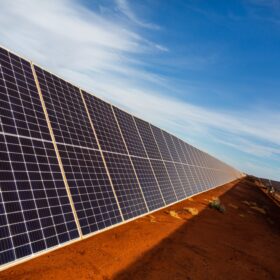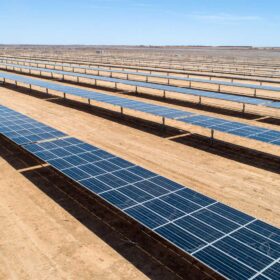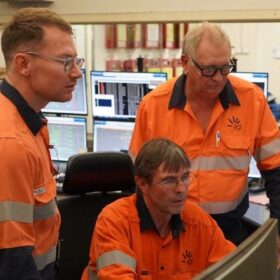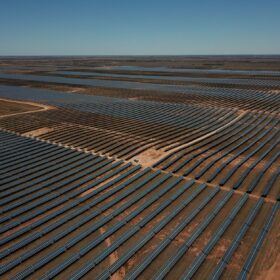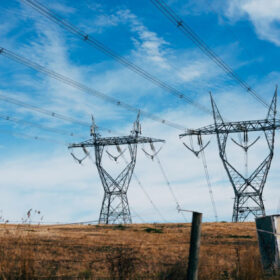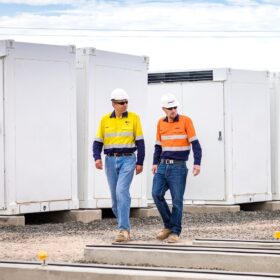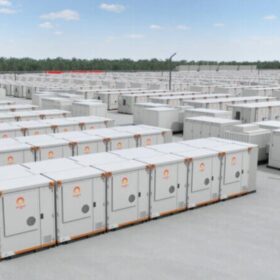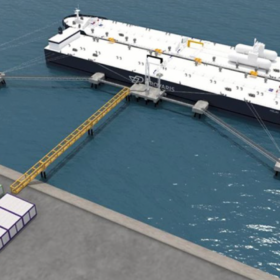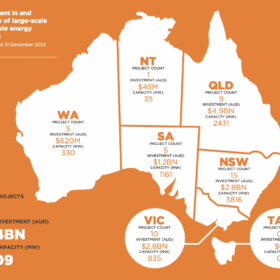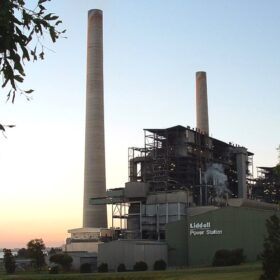Alinta pushes ahead with WA solar and battery project
Independent power producer Alinta Energy expects work on a 45 MW solar farm and 35 MW/35 MWh battery energy storage system planned for Western Australia’s Pilbara region will commence inside two months following the appointment of contractors to construct and connect the hybrid project.
NSW tender supports $2.5 billion solar and storage projects
The successful projects from the first tender conducted under the New South Wales government’s Electricity Infrastructure Roadmap have been announced with two large solar farms, a wind farm and an eight-hour battery energy storage system to be built as the state looks to manage the exit of coal-fired power generation from the grid.
Going, going, gone: AGL completes shutdown of Liddell
Today marks a historic moment in Australia’s energy transition with AGL Energy completing the shutdown of its coal-fired Liddell power station in New South Wales with the last operating turbine having been switched off for the final time.
Victoria begins search for renewables investment to kickstart SEC
The Victorian government has launched a market search for what is to be the first large-scale renewable energy project to be developed under the resurrected State Electricity Commission that will invest an initial $1 billion towards delivering 4.5 GW of renewable energy capacity.
ACE Energy comes up trumps in race for Central-West Orana REZ role
The New South Wales government has tapped the ACE Energy consortium as the “first ranked proponent” to fill the network operator role for Australia’s first coordinated renewable energy zone that will host at least 3 GW of solar, wind and storage capacity.
CS Energy readies for testing of 200 MWh Chinchilla big battery
Construction of a 100 MW/200 MWh battery energy storage system being built near Chinchilla in Queensland’s Western Downs region is now being finalised with CS Energy confirming that the last of the 80 Tesla Megapack units for the project have been delivered and installed.
Origin commits $600 million to build Eraring big battery
Origin Energy will “within weeks” begin building the first stage of a planned 700 MW/2,800 MWh grid-connected battery energy storage system being developed at the site of Australia’s largest coal-fired power plant that is set to be shut down in less than 28 months.
Floating hydrogen storage solution unveiled by WA company
Western Australian hydrogen company Provaris has unveiled a floating hydrogen gas storage solution, which it says will provide the industry with “energy efficient and cost-effective storage.”
‘Record’ renewables under construction says report which contrasts earlier analysis
Industry peak body the Clean Energy Council has arrived at a starkly different conclusion about Australia’s large-scale renewable segment in 2023 compared to independent analyst Sunwiz. In its latest report, it hails the number of utility projects under construction and is highly optimistic about the segment’s prospects.
Australia’s energy transition reaches ‘tipping point’
Australia’s transition to clean, renewable energy has reached a major milestone with AGL today commencing the process of shutting down the last of three coal-fired generating units still operating at its Liddell power station in New South Wales as it prepares to completely close the facility before the end of the month.
